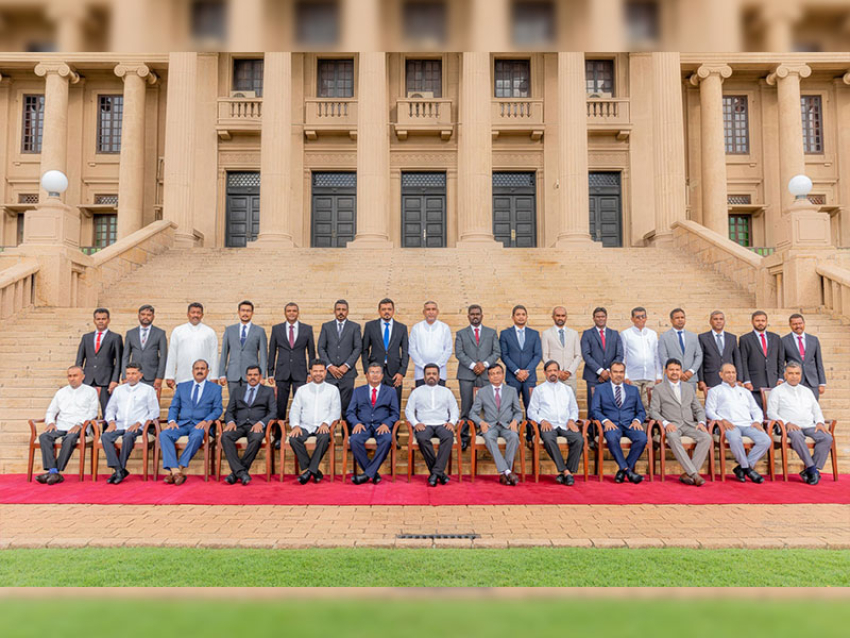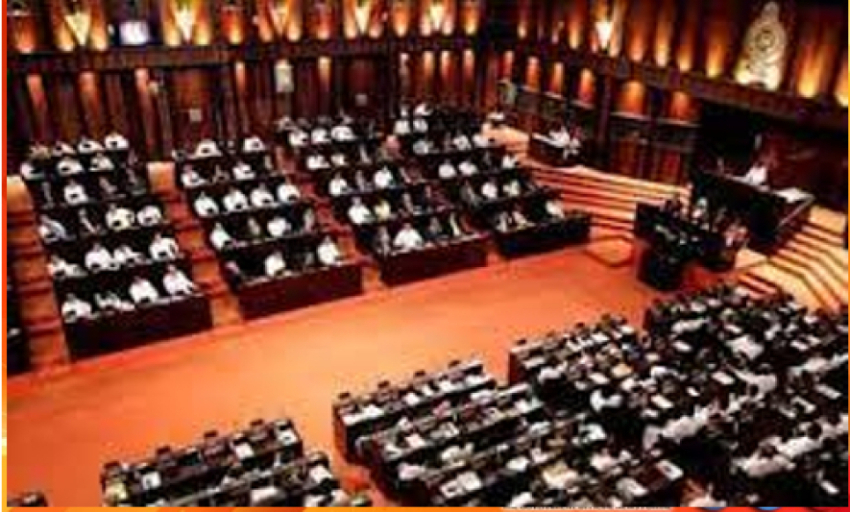The fiscal policy is the government’s budgetary policy of spending, revenue, deficit and deficit-financing to drive the economy. All government policies decide the magnitude and the quality of the budget. As the influence of the government on the economy is excessive through both budget and public services, any changes in fiscal policy or stability of the government adversely affect the national economy.
The US Federal Shutdown
For example, economists have predicted a zero growth of the US economy in the first quarter 2019 if the partial shutdown of the US government since December 20, 2018 (the longest in the US history) continues. The US growth was 2.1% in first quarter 2018 and 3.5% in third quarter 2018. The non-availability of funds in the approved budget for certain public services until new funds are approved by the senate/Parliament is the cause of the shutdown.
On 35th day (January 25, 2019) of the shutdown, the President Trump agreed to open the government till February 15, 2019 (for three weeks) to enable to pay federal employees who worked without pay.
The shutdown affects the US economy through two main sources. First, nearly 800,000 federal employees (nearly 0.5% of the work force) are unpaid. Second, a large number of private businesses such as IT which provide services to the government are unpaid affecting the private sector employment and production. As a result, spending of both government and private sector declines. Investments also are affected as private savings/investments are used to finance consumption of unpaid employees and businesses. The disruption of public services also will affect the economic activities.
As a result, the growth of the economy will decline due to reduction in spending/demand through chained effects which is known as “multiplier effects” of fiscal spending or fiscal policy” in standard macroeconomics. The US 2017 tax cut with a revenue loss of nearly US$ 1.5 trillion is expected to increase the economic growth through private spending in multiplier effects as the government also will fund the resulting deficit through new borrowing.
Sri Lankan Shutdown
The economic impact of the de-facto shutdown of the Sri Lankan government through constitutional deals since October 26, 2018 also is expected to be traced in the 2018 fourth quarter GDP numbers. The disruption of public services and business sentiments are the major causes although the government was reopened by the prompt judgement of the Supreme Court. Its adverse economic impact is revealed in various ways.
* Monetary Bailout
First, the Central Bank (CB) has bailed-out the fiscal front as it can print money. The CB’s strange press release (January 16, 2019) indicated the Monetary Board’s decision to grant Rs. 90 bn to the government through printing of money by the purchase of Treasury bills in undescribed national interest under exceptional circumstances. This came on the day after repayment of sovereign bonds of USS 1 billion out of the CB’s foreign reserve, despite the recent boasting statements of top bureaucrats about new foreign funding arranged to repay bonds. The CB also has been the manager of public debt, fiscal agent and financial adviser to the government during the past 67 years supported by international economists.
* Monetary Law Concerns
The national interest entrusted with the Monetary Board by the Monetary Law Act (MLA) does not cover such lending. If this is lawful, the CB can finance even government construction projects or housing projects by quoting same national interest. If moneys so printed are the private liabilities of the Monetary Board, they can print money in their own definitions of national interest.
* Borrowing Problems
The credit rating downgrade within a month of the shutdown along with Sri Lanka in the gray list of money laundering will raise the cost of borrowing and debt repayment difficulties as the fiscal front has to be maintained through borrowing.
Both of above shutdowns show up how the political leaders use the economic management system to govern their political power through creation of crises, e.g., a border security wall of Rs. 5.7 bn in the US and unconstitutional parliamentary election in Sri Lanka, as economies have become victims of such politics.
Sri Lankan Economic Management System
The economic management system is comprised mainly of four elements, i.e., public service delivery system, Treasury-national budget, public debt management and monetary policy. If the bureaucracy does not understand underlying macroeconomics, both economic management and outcome will not be favourable to the wider public as outlined below.
* Unassessed Public Service and Budget
Public services are not economy/business friendly as indicated by poor ease of doing business index of the World Bank. Their performance on deliverables and underlying finance is never assessed. As a result, the national budget has become a routine of administrative treasury measures to facilitate public services. Therefore, an assessment of the macroeconomic impact of the budget and centralized financial management is not made. According to COPE news, the loss of 7 public service institutions as part of fiscal policy was Rs. 21 bn (2.8% of 2017 fiscal deficit). As a result, government finance operates similar to Ponzi schemes.
* Unmanaged Public debt
The public debt management by the CB along with the national monetary policy and the provident fund management has resulted not only unsustainable debt profile, but also fiscal indiscipline due to easy debt cushioned by printing of money and provident funds in conflict of interest. Debt will be productive and disciplined only if the borrower himself manages own debt. No assessment of productivity and sustainability of debt is carried out by either the debt manager or the borrower. For example, nobody knows whether sovereign bonds raised for development purposes have been utilized for development projects.
So-called prudent debt management at lowest cost and risk (without any benchmarks) is not shown by the decline of average debt maturity period to 5.8 years, rising debt bunching and debt roll-over difficulties while the fiscal liquidity is regularly eased by the monetary policy/money printing which will fuel debt bubbles. The government funding for paddy purchase in this Maha season to cushion paddy farmers island-wide is Rs. 6.1 bn as compared to average daily funding cushion provided by the CB to bank dealers and to government during the last quarter 2018 was Rs. 116 bn (total Rs. 3.7 trillion-open market only) and Rs. 54 bn (Treasury bills only), respectively.
As reported by newspapers, the top CB officials have given evidence before the public commissions on the need for finance ministers who know the subject and issuance of government bonds throughout the past in violation of laws. Public servants can make mistakes at times, but they can’t be violating public debt laws for two decades and put the public into debt trap. Any sensible Minister of Finance would have known the gravity of national debt if relevant documents involving trillions worth bonds had been submitted to the Minister as stipulated in the law. However, the present Monetary Board states that the intent of the law was complied with by issuance of unlawful gazettes and an implicit approval of the past Monetary Boards was available for trillions of privately issued bonds. Finance Ministers are not divine to know all these violations caused by the public officials.
* Non-national Monetary Policy
The national monetary policy stipulated in the MLA is the credit distribution to meet monetary needs of the wider sectors for the purpose of mobilization of productive resources and international stability of the currency. However, the monetary policy is implemented through daily credit granted to bank dealers in the money market for their liquidity management. Some of such credit is to facilitate government funding through dealers at eased liquidity and interest rates. The debt manager function is used to raise foreign debt to the government to maintain the foreign reserve of the CB for currency stability without the use of monetary policy to improve the productivity of the economy to generate a trade surplus. No economy can develop parallel to peer countries without a national credit distribution system.
Fiscal Policy Stance
The national budget and debt are the key drivers of the economy though the public services to induce economies. The growth, employment, cost of living and distribution of economic development are the direct results of the fiscal policy.
* Four Fiscal Levers
First, public services are provided at low prices or taxes which keep general price level/inflation low and stable. Second, employment is created direct in the public services and indirect in the private sector through service contracts and fiscal policies. Third, economic infrastructure such as road network, energy, reservoirs, education, research and development and law and order is supplied and maintained to enhance the economy’s production capacity.
Fourth, debt provides risk-free investments to private savings. The CB also conducts the monetary policy through such debt instruments, i.e., open market operations, intra-day liquidity to banks and dealers, direct funding through Treasury bills and interest free advances and foreign reserves. Therefore, the CB does not face credit risk in the monetary policy.
If not for such fiscal expansion, the US and Europe today would struggle in deep recession due to the global financial crisis 2007/09 that hit, despite great central bank sand their stability mandates. Their ultra-lose monetary policies around zero/negative interest rates have not been able to push the inflation and growth to strong levels even after 10 years. The world economy also is now projected to slowdown in 2019 and 2020.
* Fiscal Expansion to induce Economic Momentum
If the private sector does not emerge to generate a foreign trade surplus or a sustainable deficit funded by private foreign capital, the fiscal policy through national budget and foreign debt needs to be further active to prevent the continued economic stagnation.
The CB’s printing of money to fund the government will be more productive than its funding to bank dealers as such money will reach the wide general public through public services to create multiplier income effects on the economy. Listening to the IMF and World Bank to scale down the fiscal policy on the premise of their emergency loans of US$ 1-2 bn would only drag the economy to further stagnation and political conflicts. Therefore, direct economic ties with economically strong countries are vital to fund the fiscal policy.
Few Policy Thoughts to induce the Economy
* Increase the fiscal deficit to 10%-15% of GDP through increased investment spending during next 5 years (the model of post-liberalized 1980s). The fiscal space is available in real terms.
* Arrange funding from friendly rich countries to finance import component of the fiscal expansion.
* Expand credit from the banking system to fund domestic cost component of the fiscal expansion.
* Assign the debt management to the Treasury to be responsible for the productivity and efficiency of the fiscal policy through assessment of the productivity of public services and debt.
* Let markets to determine prices.
* Issue a direction to the Monetary Board to conduct the monetary policy to distribute credit on sectoral basis in the best national interest at business-friendly terms for both commercial credit and development credit and to give up arbitrary monetary policy to control private sector credit for unknown low and stable inflation in the unknown medium-term to long-term through funding bank dealers for money trading.
* Assign the foreign exchange and EPF management to separate authorities.
* Reduce interest rates structure at least by 25% to encourage spending and production and reduce cost and prices as money is a productive factor.
* Keep the law and order and distribution of development fair by the wider public to prevent social up-rises.
This will take-off the economy and private sector through the fiscal policy multiplier in the next decade. Otherwise, the continuation of the prevailing flawed economic management system will be catastrophic to the public.
Instead, if the fiscal policy is to be scaled-down on the advice of international economists, the CB’s (flexible) inflation targeting monetary policy supported by the IMF and World Bank must be made accountable for the economy and living standards of the public.




















